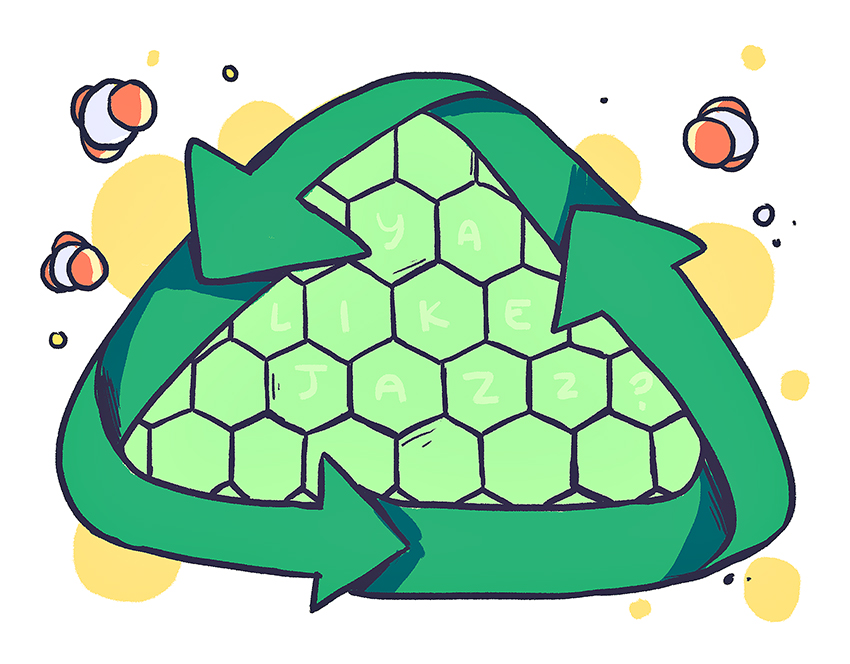Although carbon nanotubes are tiny, they have the potential to fix big problems.
Carbon nanotubes are cylindrical carbon molecules with nanometer-sized diameters. A collaboration between UT-Austin, the University of Connecticut and Mattershift, a startup that produces carbon nanotube membranes, proved that it’s possible to take these tiny tubes and make them great. In a paper published this March in Science Advances, the researchers found that these tubes can perform their jobs effectively, even on a commercial scale.
Their research involves one of the first large-scale membranes using aligned carbon nanotubes, said Joshua Moon, a graduate research fellow in Benny Freeman, a chemical engineering professor’s lab. It has traditionally been difficult to get these nanotubes to stand vertically, because they have a tendency to want to lie down.
However, this seemingly small feat has huge implications, because it means molecules can be transported much more efficiently through the nanotubes, Moon said.
Freeman said it makes these particular membranes very efficient at transmitting water, making them the perfect tool to use in processes such as water purification. For example, the membranes could be used in portable water purifiers, Moon said.
While current purifiers are able to filter out bacteria, they aren’t able to separate out viruses, which are much smaller. They could also be used to depollute entire bodies of water or purify the contaminated water created as a byproduct of hydraulic fracturing, or fracking.
Other applications include the production of carbon-zero fuels. When fuel is burned for energy, carbon dioxide is produced as a byproduct, but if there were an efficient way to convert that carbon dioxide back into fuel, then the carbon is essentially recycled, Moon said.
“If you can do that really efficiently, then you’re not going to have a lot of carbon dioxide emissions that go in the atmosphere and collect or cause climate change,” Moon said.
This works through molecular separation, which could work well with these membranes because carbon dioxide is more permeable than other atmospheric molecules such as oxygen or nitrogen, Freeman said.
The carbon dioxide molecules dissolve in the polymer of the membrane, similar to how they are dissolved in carbonated water, Freeman said.Once they’re dissolved, the atoms move around the membrane through diffusion.
Then, the atoms need to be put back together.
This process isn’t new — molecular separation and carbon capture have been done before with many other membranes — but what sets Mattershift’s membrane apart is its selectivity and permeability. Freeman said to think about it like football.
“It’s like how far the quarterback can throw the ball and how accurate it is,” Moon said.
This is the first time these membranes have been produced on such a large scale, Moon said. Traditionally, researchers had produced carbon nanotube membranes only for research and laboratory work.
Mattershift is pioneering this commercial development of carbon nanotube membranes so that it can be a platform technology, Moon said. This means that other researchers can take these membranes and apply them to a variety of situations.
Freeman said he is most excited about carbon nanotubes’ potential water purification applications.
“The ability to make clean water is one of the greatest challenges facing humanity,” Freeman said. “If we could find a way to do that cheaply, we could solve a lot of the world’s problems.”















